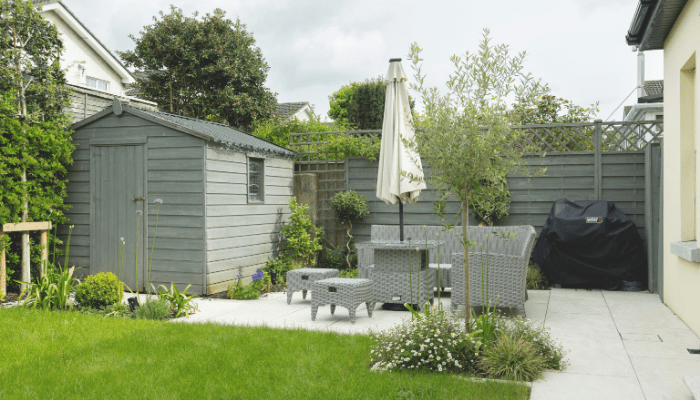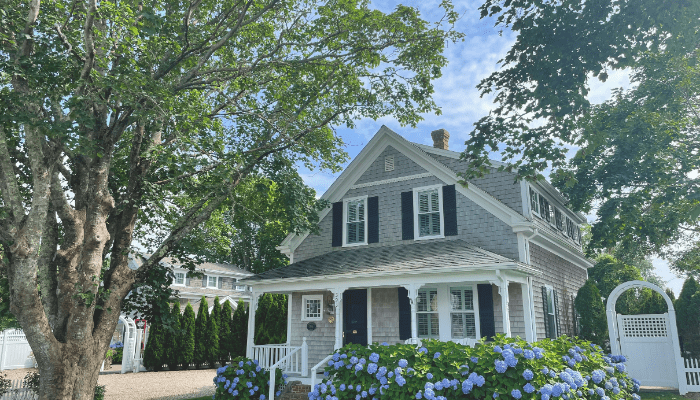Shade is not a limitation. It’s an invitation to design differently. That’s something many gardeners forget. When sunlight fades, enthusiasm often follows. But shaded gardens can be some of the most elegant, calming, and visually rich spaces you’ll ever create. The trick isn’t fighting the shade, it’s learning to harness it.
Think of shade as your garden’s quiet partner. It slows things down. It cools the soil. It offers subtlety where sunlit gardens shout. Some of the most resilient and texturally stunning plants thrive where the light softens like ferns, hostas, hellebores, and countless others that reward patience over spectacle.
Yet, gardening in the shade does require precision. You have to choose the right plants, improve the soil, and learn how water behaves under low light. It’s less about chasing blooms and more about sculpting form, contrast, and balance.
This guide will walk you through how to analyze your shade, select suitable plants, and manage soil and moisture like a pro. By the end, you’ll see your shaded corners not as wasted space, but as the foundation for something surprisingly beautiful.
And if you’ve ever envied that lush, mossy woodland look, this is where it begins.
Key Takeaways
- Assess shade levels accurately before choosing plants
- Understand the differences between full, partial, and dappled shade
- Improve soil structure with compost and mulch to support plant health
- Choose shade-tolerant plants with strong foliage and seasonal interest
- Design with layers, texture, and structure rather than relying on flowers
- Address soil moisture challenges based on dry or wet shade conditions
- Group plants by similar water and light needs to simplify care
- Plan for long-term success by observing changing light patterns over time

Understanding Shade: Know Your Light Levels
Not all shade is the same. And treating it that way is often the first mistake.
Before you start planting anything, take time to assess the light conditions in your space. Morning shade is different from afternoon shade. Dry shade under dense trees is nothing like the moist shade beside a building. The more precise you are, the better your plant choices will be.
There are four main categories to work with:
- Full shade: No direct sun, often under dense canopies or structures.
- Partial shade: 3 to 6 hours of sunlight, often in the morning.
- Dappled shade: Filtered light that shifts throughout the day.
- Dry shade: Found beneath large trees with thirsty roots and limited rain penetration.
Walk your garden throughout the day and track sun exposure with notes or photos. Do it in spring and again in summer. Trees fill out. Light changes. You’ll often find areas getting more sun than you expected or much less.
Designing for shade starts with knowing exactly what you’re working with.
Challenges of Gardening in the Shade
Shade gardens come with their own set of rules and problems. But they’re not deal-breakers. They’re design opportunities, once you know what to expect.
For one, blooming potential is limited. You won’t get full-sun flower beds bursting with color, and that’s okay. Shade gardens thrive on foliage, form, and contrast. Texture does the heavy lifting.
Soil can be compacted, especially under trees. Roots pull moisture quickly, and some shaded areas stay either too wet or too dry depending on canopy cover and drainage. Start by improving the soil with organic matter. Compost and leaf mold are especially helpful.
Tree roots can also be a challenge. Digging near them isn’t ideal, but there are solutions like raised beds, shallow-rooted plants, or planting in pockets between major roots.
Finally, air circulation is often reduced in shaded spaces, which can lead to fungal problems if the area stays too damp. Proper spacing, breathable groundcovers, and good mulch choices can reduce this risk.
With each challenge comes a design choice. That’s what makes shade gardening more strategic and more satisfying.

Designing a Shade Garden With Intention
If full-sun gardens are about color, shade gardens are about structure.
In low-light spaces, form and texture are your visual tools. Large-leafed plants like hostas anchor the eye. Fine, feathery ferns add movement. Plants with matte versus glossy leaves create contrast that’s visible even in dim light.
Think in layers. Use taller shrubs and small trees to provide vertical interest. Mid-height plants fill the central space, and groundcovers tie it all together. It’s a forest-floor effect: calm, immersive, and beautifully balanced.
Hardscaping matters too. Shaded paths, stepping stones, benches, and vertical features help break up dense planting and add usability. Use lighter-colored materials to reflect what little light exists. If space allows, carve out a small seating area. Shade gardens are often cooler and quieter, ideal for calm and rest.
Avoid overcrowding. Shade can hide messiness more easily than sun, but too many plant types in close quarters will still look chaotic. Repetition brings cohesion, and mass planting creates rhythm without needing strong blooms.
Best Shade-Loving Plants by Category
You don’t need a long plant list. You need the right list.
Here are some dependable performers, grouped by category:
Foliage-focused plants
- Hosta: Low maintenance, highly structured, wide variety of colors
- Heuchera: Adds deep purples, silvers, and striking contrast
- Ferns: From native varieties to more architectural types like Japanese painted fern
- Bergenia: Glossy leaves, some with winter color, occasional blooms
Shade-tolerant flowering plants
- Astilbe: Feathery blooms in mid to late summer
- Bleeding heart (Dicentra): Elegant and dependable spring interest
- Foxglove (Digitalis): Tall spires of blooms, good for partial shade
- Hydrangea macrophylla: Especially reliable in part shade with moist soil
Edible options for low-light
- Leafy greens: Lettuce, spinach, arugula thrive with less than 4 hours of sun
- Chives and mint: Herbs that tolerate shade, but benefit from dappled light
- Rhubarb: Hardy and surprisingly decorative
- Currants and gooseberries: Among the few fruits that grow in part shade
Don’t overwhelm your design. A handful of reliable performers, repeated with intention, will outperform a crowded mix of specialty plants.

Soil and Moisture Management in Shaded Areas
Shade doesn’t mean wet. In fact, many shaded areas, especially under trees, are surprisingly dry. Others stay soggy due to lack of evaporation. Understanding which you have is critical.
Dry shade under trees often suffers from root competition. To counter this, improve the topsoil with compost and layer in organic mulch to retain moisture. Don’t dig deeply around trees; disturb the roots as little as possible.
For wet shade, drainage is the issue. Raise planting areas slightly, use coarse mulch, and select moisture-tolerant species like ferns, ligularia, or Siberian iris.
In both cases, avoid heavy clay and compaction. Shade gardens respond best to loose, humus-rich soil that mimics a forest floor. Keep the soil breathable. It pays off in plant health and root development.
Raised beds can also be effective in shady spaces. They offer better control over soil composition and allow planting without disturbing tree roots. Even a 15 to 20 cm lift can make a difference.
Tips for Long-Term Success in Shade Gardens
Shade changes. Trees grow. Canopies shift. A space that once had morning sun may become fully shaded in five years. Designing for shade means committing to observation over time.
Group plants with similar water and light needs. This improves efficiency in both maintenance and performance. If you mix drought-tolerant and moisture-loving plants, you’ll constantly struggle to keep both happy.
Space plants for air circulation. Fungal issues are more common in shade, and overcrowding will only make it worse. A little breathing room helps keep leaves dry and disease away.
Use mulch, but avoid piling it against stems or trunks. Organic mulch breaks down into the soil over time and improves structure, just keep it tidy.
Finally, maintain gently. Prune selectively to open up space and light. Feed lightly in early spring, and water deeply during dry spells. Shade gardens don’t need aggressive intervention, they respond best to consistency and calm care.

Conclusion
Shade doesn’t need rescuing. It needs intention. Once you understand the patterns of light and moisture, every decision from plant choice to pathway placement becomes an opportunity to build texture and depth where others see limitations.
A well-designed shade garden invites people in. It feels cooler, quieter, and more alive than the spaces that scorch under full sun. Think ferns arching over damp stone, glossy leaves catching soft light, and groundcovers weaving color through dim corners. These are details that reward observation, and good planning.
Start small. Experiment with one shaded bed. Test how soil behaves through the seasons. You’ll be amazed at how forgiving and expressive low-light gardens can be when designed thoughtfully.
If you’re ready to transform an underused corner or struggling shady patch into something truly vibrant, we can help. At Oasis Biosistema, we specialize in creating gardens that work with nature not against it.
Contact us today to plan a design that turns your shaded space into a thriving, elegant garden that lasts.
FAQ
Can I grow a garden in the shade?
Yes, you can grow a garden in the shade. Many plants thrive without full sun, especially foliage and woodland species. Choose shade-loving plants, improve soil drainage, and avoid overwatering. With the right selection and care, even low-light areas can become lush, thriving garden spaces.
What plants do well in the shade?
Plants that grow well in shade include hostas, ferns, astilbes, hellebores, and begonias. For edible options, try leafy greens like spinach, kale, and arugula. These shade-tolerant plants adapt to low-light conditions and can add color, texture, and life to dim or north-facing garden areas.
What to do if your garden doesn’t get enough sun?
If your garden lacks sunlight, focus on shade-tolerant plants and improve soil health. Use reflective surfaces to bounce light, trim overhanging branches, and consider raised beds to enhance drainage. Container gardening also works well in shaded areas, allowing better placement and control of growing conditions.
What do you put in a shaded area of a garden?
In shaded garden areas, use shade-loving plants like ferns, hostas, and impatiens. Add decorative mulch, moss, or shade-tolerant ground covers for texture. Consider seating, a water feature, or a woodland path to create a peaceful, low-maintenance space that makes the most of limited sunlight.



